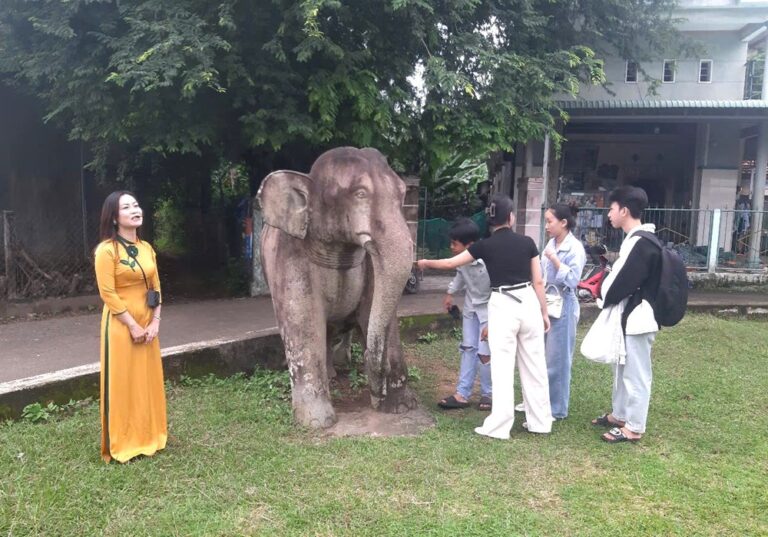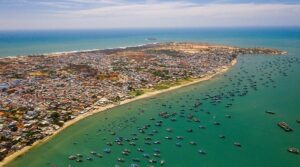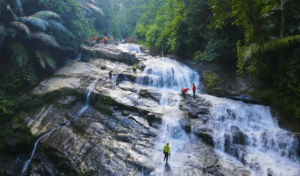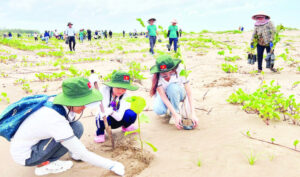A British man has spent half of his life to explore and introduce the beauty of Vietnam’s caves to the world.
22 years ago Howard Limbert, the most recent leader of the British Cave Research Association, made his first expedition to the Phong Nha cave of the cave systems of Phong Nha – Ke Bang National Park in the central province of Quang Binh.
After the visit, Howard and his team explored many of the cave’s wonderful features and values that were later featured in the world famous Lonely Planet guidebook. Since then, more tourists have come to the site.
The park has so far attracted around 3 million tourists and improved the lives of people living in the area by creating jobs for 2,600 residents.
From a 15-year-old boy’s caving passion to the world’s largest cave
The 54-year-old explorer said the dream of discovering caves came to him when he was in high school and his teacher let him and some friends explore a cave in Yorkshire, in Northern England. He joined the local caving club and started his journey to conquer caves around the world. Since then, Limbert has been driven by the desire to explore what is inside mysterious caves.

In 1989, when the young explorer felt unsatisfied with the caves he was exploring in the UK, primitive Asian caves had become a big attraction. Limbert then decided to send letters to a number of universities in Laos, Myanmar and Vietnam to ask for cooperation to explore caves in those countries.
According to Limbert, he received a very positive response from the Hanoi University of Science, and his team of 10 people soon became the first caving team in Vietnam.
“Local authorities gave us a house to stay in, which was the only brick one in the village (while the others were built of wood),” Limbert recalled from the first days of his journey to conquer Vietnam’s caves.
In 2009, Limbert and his team conducted an expedition which was to become a turning point for the world’s spelunking community. That year the explorers went deep into Son Doong Cave, which was later recognized as the biggest cave in the world by National Geographic.
In fact, the cave was found in 1990 by a local man named Ho Khanh, but he was not able to enter the structure. After Limbert and his team came and conducted a survey on the cave, Son Doong became famous and received global recognition.
“I just want to promote the beauty and uniqueness of Vietnam’s caves to the world,” Limbert shared. “I want to do something to attract tourists to Quang Binh, to make jobs for local people and improve their lives,” he added.
The explorer, who has made 15 visits to Vietnam for caving, said his expeditions would not be successful without the help of people living around the caves he explores.

“When we first came here, we knew very little about Vietnam. We had no idea about the geography of Vietnam,” he shared. “We’re very lucky since two member of the Hanoi University of Science were born in Quang Binh and they knew about the caves.”
“We could be lost on the way into the caves without the guide of local people,” he added.
Talking about his support, Limbert said he’s lucky to have a wife who has been always by his side, supporting and sharing the passion of caving.
“She has been with me to everywhere I go,” he shared.
Turn off TV and go exploring!
Limbert has now mapped 300km of caves in Vietnam and conquered 10% of the cave system in Phong Nha – Ke Bang National Park.
Still, the explorer from Britain also believes that Vietnam still has many bigger and more beautiful caves than Son Doong.
“I have something to tell the youths in Vietnam. Turn off the TV and take trips to explore your country,” he said.
Last month the British Cave Research Association, led by Limbert, found seven new caves in Phong Nha Ke Bang National Park during a one-week trip. Ho Khanh, the team’s guide, said four of the seven grottos have already been named: Gio (Wind), Con Chay, Ky, and Hai Cua (Two Gates).
“Your country is beautiful, TV and couches can never give you the true feeling of that beauty,” Limbert added.















